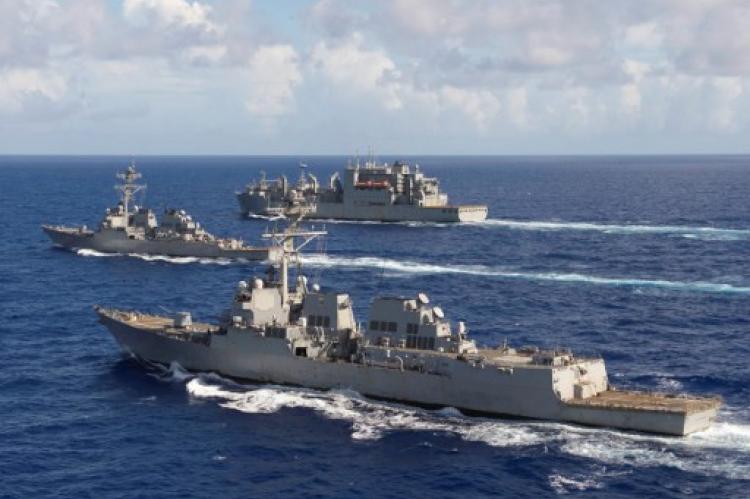From Mexico to Venezuela: U.S. Expands Military Footprint Across the Americas
By: Omar Silva I Editor/Publisher
National Perspective Belize – Intel Research
Belize City, Friday: August 22, 2025: A New Regional Arc of U.S. Military Operations from northern Mexico to the southern Caribbean off Venezuela, the United States has quietly stitched together a wide operational arc of military activity under the banner of counter-narcotics operations. What began as drone surveillance missions in Mexican skies is now complemented by the deployment of Aegis destroyers and amphibious forces into the Caribbean Basin—an unmistakable sign of a deeper strategic footprint in the region.
For Belize and CARICOM states, situated in the middle of this arc, the implications are profound. Trade, tourism, fisheries, and sovereignty could all be affected as the world’s most powerful military recalibrates its presence in our hemisphere.
Guillot’s Senate Testimony: Surveillance Without Mexico’s Permission
The clearest window into U.S. intent came on February 13, 2025, during a Senate Armed Services Committee hearing. General Gregory Guillot, Commander of U.S. Northern Command (NORTHCOM), told lawmakers that:
“We have increased cooperation with Mexico to go address the cartel violence… Permitted by Mexico? No, by the Department [of Defense], sir. But we do have intelligence sharing with Mexico.”
His admission revealed two truths:
- ISR (Intelligence, Surveillance, Reconnaissance) flights are happening over Mexico without explicit approval from the Mexican government.
- Coordination is maintained through intelligence-sharing channels, a softer way of managing the sovereignty issue.
Mexico’s President Claudia Sheinbaum downplayed the matter, saying all cooperation was at Mexico’s request and within agreed frameworks. Yet Guillot’s words remain part of the official congressional record, signaling a divergence between Washington’s operational reality and Mexico City’s political messaging.
Klippenstein’s Bombshell: U.S. Preparing Target Packages in Mexico
Days later, investigative journalist Ken Klippenstein, known for his FOIA-driven national security reporting, revealed that the Pentagon is preparing target packages for strikes against Mexican cartels. According to his Aug. 20–21 reporting, the plans are being drawn up with a mid-September readiness window, and remarkably, the Pentagon itself confirmed that such planning was underway.
The target list reportedly includes Sinaloa and CJNG, the two most powerful cartel groups. While no legal authority currently exists for U.S. drone strikes inside Mexico, the operational groundwork suggests the military is positioning itself for rapid action if authorized.
ISR and Drones: Mapping Mexico
Supporting Klippenstein’s reporting, open-source defence outlets have documented:
- MQ-9 Reaper flights deep into Mexican territory, some linked to CIA operations.
- Enhanced ISR platforms flying along the border and into northern Mexico.
- Expanding use of U-2 reconnaissance aircraft and even spy satellites to map cartel networks.
These are not speculative claims but confirmed operational sightings that indicate a deliberate and escalating surveillance campaign inside Mexican airspace.
The Southern Front: Destroyers Off Venezuela
At the opposite end of the arc, the U.S. Navy has surged three guided-missile destroyers—USS Gravely, USS Jason Dunham, and USS Sampson—into the southern Caribbean, positioned off Venezuela’s littorals. Reports also suggest amphibious elements are joining, raising the potential for rapid insertion capabilities, far beyond the scope of simple counter-narco patrols.
Washington frames the deployment as part of a counter-narcotics crackdown, yet the symbolism is unmistakable: Venezuela is a geopolitical partner of Russia, China, and Iran. The message sent is one of deterrence and containment—a naval warning dressed in anti-cartel language.
Caracas has denounced the deployments as a sovereignty threat, with state media amplifying militia mobilization rhetoric. The potential for miscalculation in these crowded Caribbean waters is real.
Belize and CARICOM: Sitting in the Middle
Belize, positioned between Mexico’s southern frontier and the Caribbean transit corridor, cannot afford to ignore these developments.
- Maritime Exposure: More naval activity will inevitably mean increased interdictions, rerouting, and surveillance in Caribbean and Central American waters. Belize’s fishing and shipping fleets may face heightened scrutiny or disruption.
- Airspace Exposure: ISR flights and tanker refuelling routes could cross into or near Belize-controlled airspace through the COCESNA regional system.
- Route Displacement: As traffickers are pressured off Venezuelan littorals, they are likely to push westward into Central American corridors, with Belize’s waters and Cayes as potential staging points.
- Diplomatic Exposure: Belize and CARICOM governments may be asked to publicly support U.S. moves, risking credibility with Latin American partners who view this as militarization.
Sovereignty, Law, and Red Lines
Legally, the U.S. military does not currently have authority for drone strikes inside Mexico. Any kinetic action would require new directives, host-nation consent, or Congressional action. Guillot’s testimony made this clear, but the preparation of target packages suggests Washington is hedging toward action.
Mexico’s government, for its part, is balancing public sovereignty rhetoric with private cooperation—an uncomfortable position. Venezuela, meanwhile, sees these moves as nothing short of a threat, escalating the risk of confrontation.
Pull Quotes
{“Permitted by Mexico? No, by the Department, sir.” — Gen. Gregory Guillot, U.S. Senate testimony}
{“Target packages are being prepared for strikes against Mexican cartels.” — Ken Klippenstein reporting}
{“Belize sits at the centre of this arc, exposed to the spillover of U.S. operations north and south.” — National Perspective Belize}
Conclusion: The Americas at a Crossroads
What we are witnessing is not simply a counternarcotics crackdown. It is a regional military posture stretching from northern Mexico to Venezuela, justified by cartel violence but adaptable for broader geopolitical ends.
For Belize and the wider Caribbean Basin, this raises urgent questions: How do we protect our sovereignty, trade, and tourism in the face of expanding U.S. operations? How do CARICOM states balance solidarity with Washington against the optics of militarization in Latin America?
The answers will define whether Belize becomes a bystander or an active voice in shaping the Caribbean’s response to this new regional arc of American power.
- Log in to post comments

